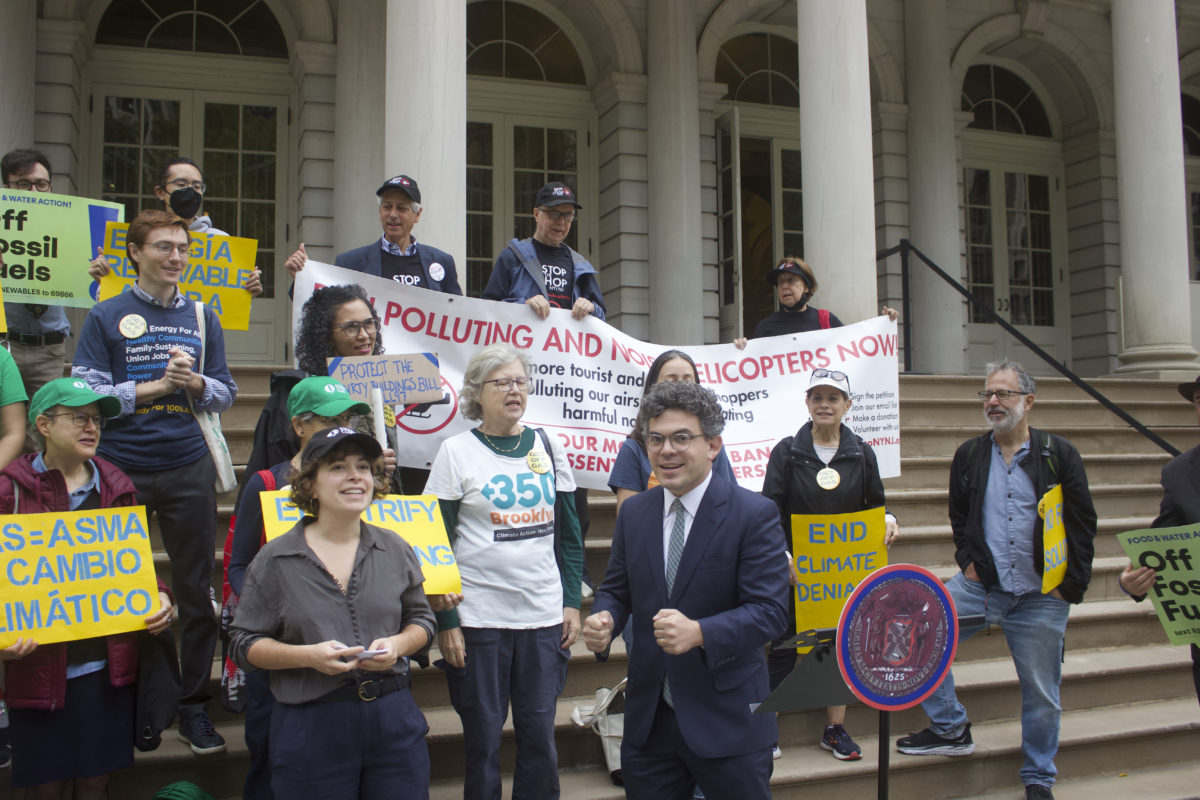City hosts first in-person BQE forum
Residents “cautiously optimistic”
By Matthew Fischetti
mfischetti@queensledger
Over 50 Brooklyn Heights residents braved the rainy weather to attend a meeting on how to repair the crumbling Brooklyn-Queens Expressway last Thursday.
Held at the New York City College of Technology, residents were able to engage with New York City Department of Transportation and various consulting groups on how to fix what the city dubs “BQE Central” – the 1.5 mile stretch of city-owned roadway that extends from Atlantic Avenue to Sand Street and includes the 0.4 mile long triple cantilever.
Fixing the BQE has been an issue of the last two administrations, but Mayor Eric Adams announced last month a series of engagement sessions (which Thursday’s meeting was the first in-person iteration) in order to take advantage of federal dollars provided by the Bipartisan Infrastructure Law . Feedback for BQE Central will extend to February 2023, with the environmental review process occuring in March 2023, and implementation beginning in 2026.
While not a traditional community feedback format, residents were able to discuss with representatives of the DOT and various consultant groups, place post-it notes and stick pushpins with brown tags to discuss their recommendations and critiques of various plans – after listening in to a slideshow presentation regarding the administration’s plans.
“I don’t know if I’ve had high hopes. I think that it was good. I’m glad it’s in person,” said Linda DeRosa, a 68-year-old Joralemon Street resident. “I think it’s great to be able to walk around and talk to a lot of the individual players from DOT and various agencies that are involved. But I’m hoping at the next meeting, there’s more coming towards us from the agencies and less of us giving.”
DeRosa, a member of the Willowtown Association, emphasized that she didn’t want a “Robert Moses type plan” but “progressive transformative thinking.” Out of all the plans presented, she best liked the Bjarke Ingels Group proposal, which would turn the roadway into a park.
Councilman Lincoln Restler, who represents Brooklyn Heights, critizicized the format, to what he likened to a “science fair”.
“This doesn’t provide adequate feedback and I hope there is more rigorous engagement in the future,” Restler said in an interview.
The 51-year-old chair of the Atlantic Avenue Business Improvement District board, Laurie Duncan, thought the format was good.
“ I think it was a good start considering there haven’t been any significant in person events in quite some time. I think it was a good way to get people out and get them engaged in one on one conversations,” Duncan said.
Duncan explained that both as a 26 year resident of Atlantic Avenue and as a representative of the local BID, issues with the BQE have a big impact on her and neighbors’ lives.
“Atlantic Avenue is a major thoroughfare at the moment through the borough and so the trucks and the car trafficimpact people who live and work and on businesses on the avenue because we’ve got parking issues already – you have double parking, you have more cars and trucks and then you have the safety issues of trucks speeding and cars speeding,” Duncan explained. “And then you have bicycles that have no place to go on Atlantic Avenue. So they end up on the sidewalks, which is even more dangerous for pedestrians. And so it is a big, it is a big deal.”
Duncan stated that she liked the Bjarke Ingels Plan the best, as well as former Comptroller Scott Stringer’s plan (which would make the BQE for trucks only) and that the only plan she would not support would to be nothing.
“I’m cautiously optimistic about the direction things will go. I think we need to be smart and agile. And yeah, get all the money we can to throw it this problem. This is the one problem, I think is worth throwing money at,” Duncan said. “Get all the money we can to throw at this problem, but actually solve the problem. Let’s not create a lot of new problems.


